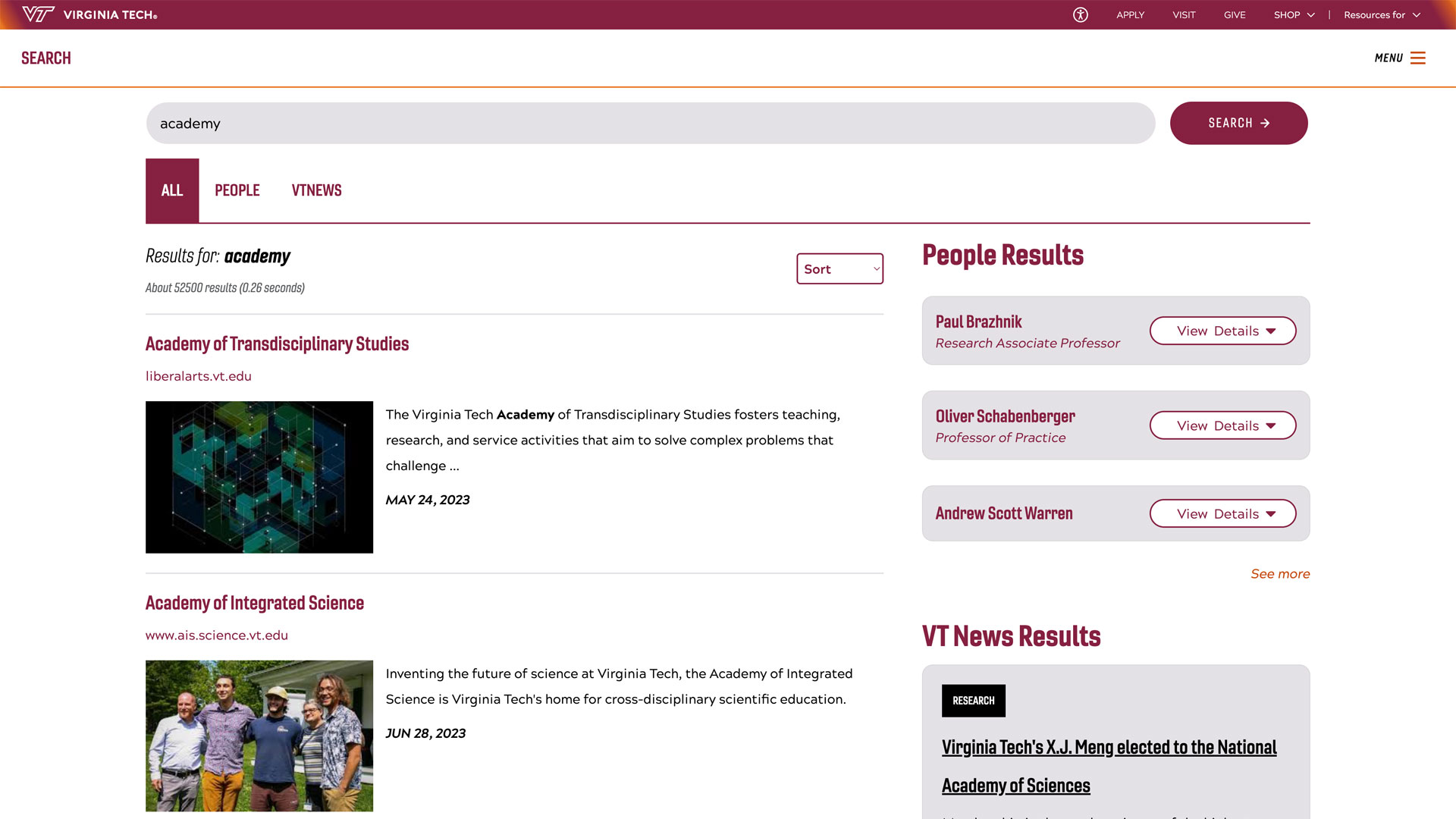Exchange program opens doors for Chilean student veterinary researchers

When Maria Francisca Valdés and Stefanie Guevara arrived at Virginia Tech from Chile's southern city of Valdivia, they brought more than their veterinary knowledge.
They carried dreams of research breakthroughs, eagerness to learn new techniques, and a willingness to brave snow in what would have been their summer months back home.
For three months, these Universidad Austral de Chile veterinary students rolled up their sleeves in Virginia-Maryland College of Veterinary Medicine laboratories, tackling challenging research projects that could improve animal health worldwide.
Building bridges between continents
"This exchange program provides a unique opportunity for Chilean students to experience advanced veterinary research techniques while bringing fresh perspectives to our college," said Francisco Carvallo, clinical associate professor of anatomic pathology, who coordinates the program. "It also strengthens the bond between our institutions and helps build the next generation of global veterinary researchers."
The collaboration between the two universities began in 1996 with a veterinary faculty exchange facilitated by Professor Emeritus Gerhardt Schurig, who later served as the college's dean from 2004-13. Working with Virginia Tech Outreach and International Affairs, Schurig expanded the program universitywide.
The partnership runs deep. Currently, about 10 Universidad Austral de Chile professors completed their advanced degrees at Virginia Tech before returning to Chile, creating a natural pipeline for collaboration.
Fighting stubborn ear infections in dogs
For Valdés, the journey to Virginia Tech culminated her veterinary education with hands-on research experience. Working in the laboratory of Jessica Gilbertie, associate professor of microbiology, Valdés investigated why some dog ear infections keep returning despite treatment.
"About 25 percent of dogs with ear infections experience recurrence within two years," Valdés said during her final presentation. "This is often because the bacteria form these protective biofilms. Two common bacteria in dog ear infections — Pseudomonas aeruginosa and Staphylococcus pseudintermedius — can work together to create especially strong biofilms that resist standard treatments."
Her research tested eight antimicrobial therapies against clinical isolates from canine ear infections. Pseudomonas aeruginosa is particularly concerning as it's a multidrug-resistant bacterium that can cause serious infections in various animals and humans. The findings showed that even the most effective treatment, Mometax, only reduced Pseudomonas biofilm by 36 percent, highlighting the need for better treatment approaches.
"One of the skills I gained was designing a protocol from scratch — not just following steps but understanding all the elements that go into a research project," said Valdés. "I also learned that science involves failure and resilience. When I failed, I got frustrated, but I learned that's part of the process — trying again and learning from mistakes."
Her experience at the veterinary college confirmed her passion for research. "I already had this research seed in my brain, but this experience allowed me to water that seed. Now, I want to continue on this academic path to see if my sprout can grow into a tree."
Improving cancer diagnosis in dogs
While Valdés was cultivating bacteria, Guevara was examining cancer cells with Natalia Strandberg, clinical assistant professor in the clinical pathology department.
"Canine lymphoma is one of the most commonly diagnosed cancers in dogs," Guevara said. "While most cases involve B-cells [a type of white blood cell], there are many subtypes with different behaviors and outcomes. Treating all lymphomas as if they're the same could lead to inappropriate treatments and poorer outcomes for some dogs."
Her study analyzed 34 cases of canine lymphoma, comparing diagnoses made from examining cells under a microscope with more advanced testing methods. The results showed that the simpler cell examination method correctly identified the lymphoma type, whether B-cell or T-cell, in 29 of 31 cases — a promising finding that supports using needle sampling as an effective initial diagnostic approach.
"This needle sampling technique is less expensive and more practical than surgical biopsies," Guevara said. "Our findings suggest that following a specific examination protocol helps veterinarians consistently identify lymphoma types, regardless of their experience level."
Beyond her research project, Guevara participated in daily clinical pathology practice and received intensive training in the Cytopathology Reading Room.
"The level of veterinary medicine here is impressive," she said. "The professionals, especially the clinical pathologists, are amazing. I've learned so much."
Overcoming challenges and building skills
Both students acknowledged that language barriers presented initial challenges, but they said the supportive environment at Virginia Tech helped them succeed.
"When I came here, my English wasn't perfect. I had to be brave," said Guevara. "But everything about me improved during this time. People were very supportive, especially in clinical pathology."
The students gained technical skills they hadn't been able to access in Chile. Valdés learned to use a spectrophotometer and analyze data using percent reduction calculations, while Guevara developed expertise in the cytomorphological analysis of lymphoma cases.
"In Chile, we don't have as much access to specialized equipment or the chance to work independently on research projects," said Valdés. "Here, they give you the opportunity to research and find things out for yourself. You need to be creative, and that's the most fun part."
Where research meets global perspective
Since 1996, this exchange has created connections beyond individual research projects. As global challenges such as antibiotic resistance and cancer diagnosis become increasingly borderless, these cross-cultural collaborations help prepare researchers who can think beyond boundaries.
The program embodies the One Health approach by connecting animal medicine, human health, and environmental science across continents. When students return to Chile with new skills and perspectives, they strengthen the decades-long partnership between the two institutions.
Looking ahead
Both students plan to pursue advanced degrees after completing their veterinary education. Valdés is interested in microbiology or genetics research, while Guevara hopes to return to the United States for further training in clinical pathology, possibly pursuing board certification.
"Take the risk," Valdés advised future students considering the exchange program. "It's a really good experience to get involved in what you like."
“Even if you're afraid because of language barriers or knowledge gaps, you have to be bold,” Guevara said. “People will understand, and the experience will improve everything about you."




